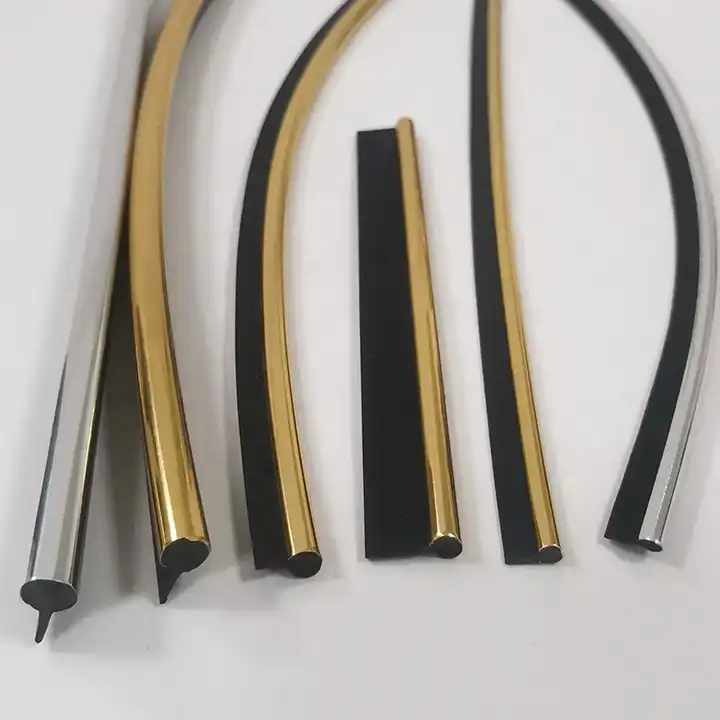Storm Door Weather Seal Strips for Improved Insulation and Energy Efficiency
Nov . 06, 2024 15:30 Back to list
Storm Door Weather Seal Strips for Improved Insulation and Energy Efficiency
Enhancing Home Efficiency with Storm Door Seal Strip Products
As the seasons change, so do the challenges homeowners face regarding energy efficiency and comfort within their living spaces. One often-overlooked solution to these seasonal issues is the installation of storm door seal strips. These products play a vital role in maintaining a comfortable indoor environment while also reducing energy bills. In this article, we will explore the importance of storm door seal strips, their various types, and how to choose the right product for your home.
Understanding Storm Door Seal Strips
Storm door seal strips are designed to create a barrier between your home and the outside elements. They are typically made from materials such as rubber, foam, or weather-resistant vinyl, and are installed around the edges of storm doors. The primary purpose of these seal strips is to prevent drafts, moisture, and insects from entering the home, which can significantly impact your comfort and energy efficiency.
By effectively sealing the gaps around storm doors, these products help maintain consistent indoor temperatures, reducing the need for heating during winter and cooling during summer. As a result, homeowners can enjoy lower utility bills and a more comfortable living space year-round.
Types of Storm Door Seal Strips
There are several types of storm door seal strips available on the market, each with its own unique features and benefits. Some of the most common types include
1. V-Type Weather Stripping This type consists of a flexible material that forms a V shape. It is typically used on doors and windows and can easily compress to create a tight seal when closed. V-type weather stripping is both effective and easy to install, making it a popular choice among homeowners.
2. Foam Tape Foam tape is another widely used product for sealing gaps around storm doors. It is available in various thicknesses and is ideal for irregular surfaces. Foam tape is easy to cut and apply, making it a versatile option for sealing both doors and windows.
3. Magnetic Weather Stripping This innovative solution uses magnets to create an airtight seal. It is especially effective for screen doors and sliding doors, where traditional weather stripping might not create a sufficient seal. Magnetic weather stripping provides a strong seal while still allowing for easy door operation.
storm door seal strip products

4. Door Sweeps Door sweeps are attached to the bottom of the storm door. They provide an additional barrier against drafts, moisture, and pests. Available in various materials, door sweeps can be fitted to most standard-sized doors.
Choosing the Right Storm Door Seal Strip
When selecting the right storm door seal strip for your home, consider the following factors
1. Material Choose a durable and weather-resistant material that can withstand the elements. Rubber and vinyl are excellent choices for long-lasting performance.
2. Size Measure the gaps around your storm door to ensure you select a seal strip that will fit appropriately. Most products come in standard sizes, but many can be cut to fit.
3. Ease of Installation Look for products that come with adhesive backing or are easy to install with minimal tools required. This will save you time and effort during installation.
4. Climate Considerations Different regions experience varying weather conditions. Select seal strips that are specifically designed for your climate to ensure optimal performance.
Conclusion
Homeowners who invest in storm door seal strip products will benefit from enhanced comfort, energy efficiency, and protection against the elements. By choosing the right type of seal strip and ensuring a proper fit, you can create a more inviting and efficient living space. Whether you’re looking to reduce your energy bills, enhance your home’s comfort, or prevent unwanted intrusions, storm door seal strips are a simple yet effective solution that deserves a spot on your home improvement checklist. Embrace the changing seasons with confidence, knowing your home is well-protected against the elements.
-
LED Neon Rope Light Outdoor Companies: Durable & Bright Solutions
NewsAug.27,2025
-
Premium Window Seal Strip Adhesive: Manufacturers & Suppliers
NewsAug.26,2025
-
Best Window Seal Strip Adhesive Companies: Strong, Durable Seals
NewsAug.25,2025
-
Karcher A2004 Wet & Dry Vacuum Filter: Premium Replacement Cartridge
NewsAug.24,2025
-
Premium Vacuum Filter for Karcher VC 4, VC 6, VC 7 & Tineco A10, A11
NewsAug.23,2025
-
Hi-Flo HF155 Oil Filter KTM 250 EXC Racing 03-06 | OEM 580.38.005.000
NewsAug.22,2025
